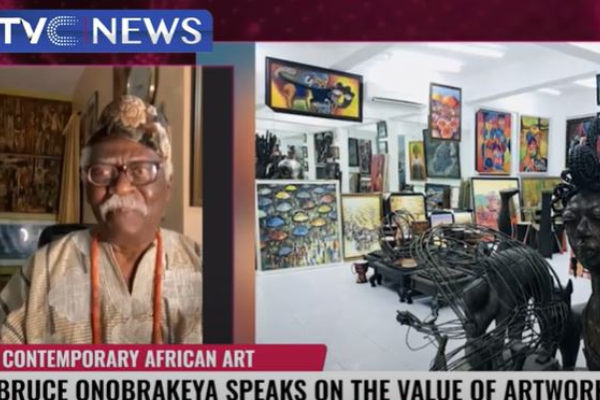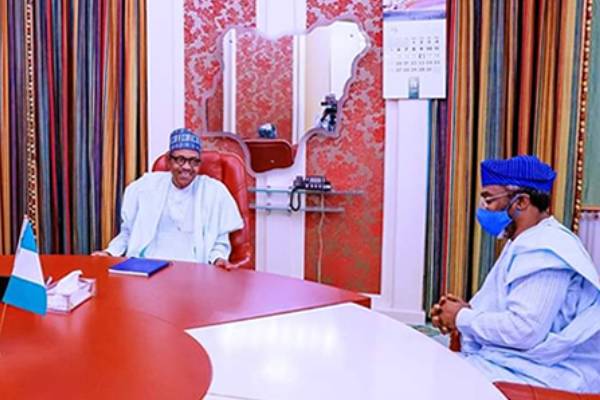Africans have mastered the arts of painting and sculpture before colonisation. Beautiful Bini bronze and Anak Kaduna nok artwork that the British looted provide as evidence of this fact and are on display to the delight of visitors in museums around the world. Everyone who sees current African art attests to its splendor and beauty.
Nigerian printmaker, painter and sculptor elder Bruce Onobrakeye gave an insight into how he became an icon of visual art on TVC Breakfast.
The 90-year-old printer and sculptor said art was a part of our lives from the traditional time but declined due to colonial impact and the concentration on the three arrows, writing, reading, and respecting. He was speaking about the shift of art years back to what is today attainable.
[wonderplugin_video iframe=”https://youtu.be/oNNeu5oklDs” lightbox=0 lightboxsize=1 lightboxwidth=960 lightboxheight=540 autoopen=0 autoopendelay=0 autoclose=0 lightboxtitle=”” lightboxgroup=”” lightboxshownavigation=0 showimage=”” lightboxoptions=”” videowidth=600 videoheight=400 keepaspectratio=1 autoplay=0 loop=0 videocss=”position:relative;display:block;background-color:#000;overflow:hidden;max-width:100%;margin:0 auto;” playbutton=”https://www.tvcnews.tv/wp-content/plugins/wonderplugin-video-embed/engine/playvideo-64-64-0.png”]
He stated that throughout the time of independence, Art was not regarded as one type of job that can put bread and butter or bacon on the table.
“At the time we went to art school, the morale, feeling about art was very good.
“But the group that Zaria outside formed worked hard to give that artistic circumstance the present-day pleasant vibe.
“We were aware of something that may advance us as a people, bring us wealth, and move the nation toward a position where we could rely on art for many things that will move us forward, including partial expression.
“Art has advanced significantly since the colonial era’s protracted beginning. And we are seeing examples of people who can write books, become paraphernalia, and hold positions in where many others are those who ought to be respected, where those who ought to be respected are gathered and regarded, are in fact respected.
“In those days, when we went to school, nobody would want to sponsor a child to school. But nowadays. If you say you want to send your child to school. You just go around and find the money to send that child to school because you think that it’s going to be like the grilles.
speaking on what gives him inspiration on his painting, Bruce Onobrakeya said time spent in Benin help him to appreciate the value of culture
He said” The Urhoboland is part of the delta region where Bini is and it is a cherish-able culture. So my father moving from European land to Benin land was also not a disruption of culture.
“What we experienced traditionally in Urhoboland, we got in Benin. But the Benin, high culture actually helped me to appreciate the value of culture. And, that put in me, the desire, the passion to go back to the past, did what is good about it, about that past and bring it to the present time.
“The movement from Urhoboland to Benin was very good because I was always down there in a cultural setup, that I have been exploring even up to today.
The Sculptor expressed his happiness about the development of the artworks being returned to Benin but emphasized that many of the works should be returned to the palace because they were removed from the palace.
“Instead of keeping them just about anyplace and letting them scatter once more, the work should be brought back to the palace, where it will be up to the palace to determine what to do with it.





